Dark Images From Inside the Stanford Prison Experiment
1. Arrest
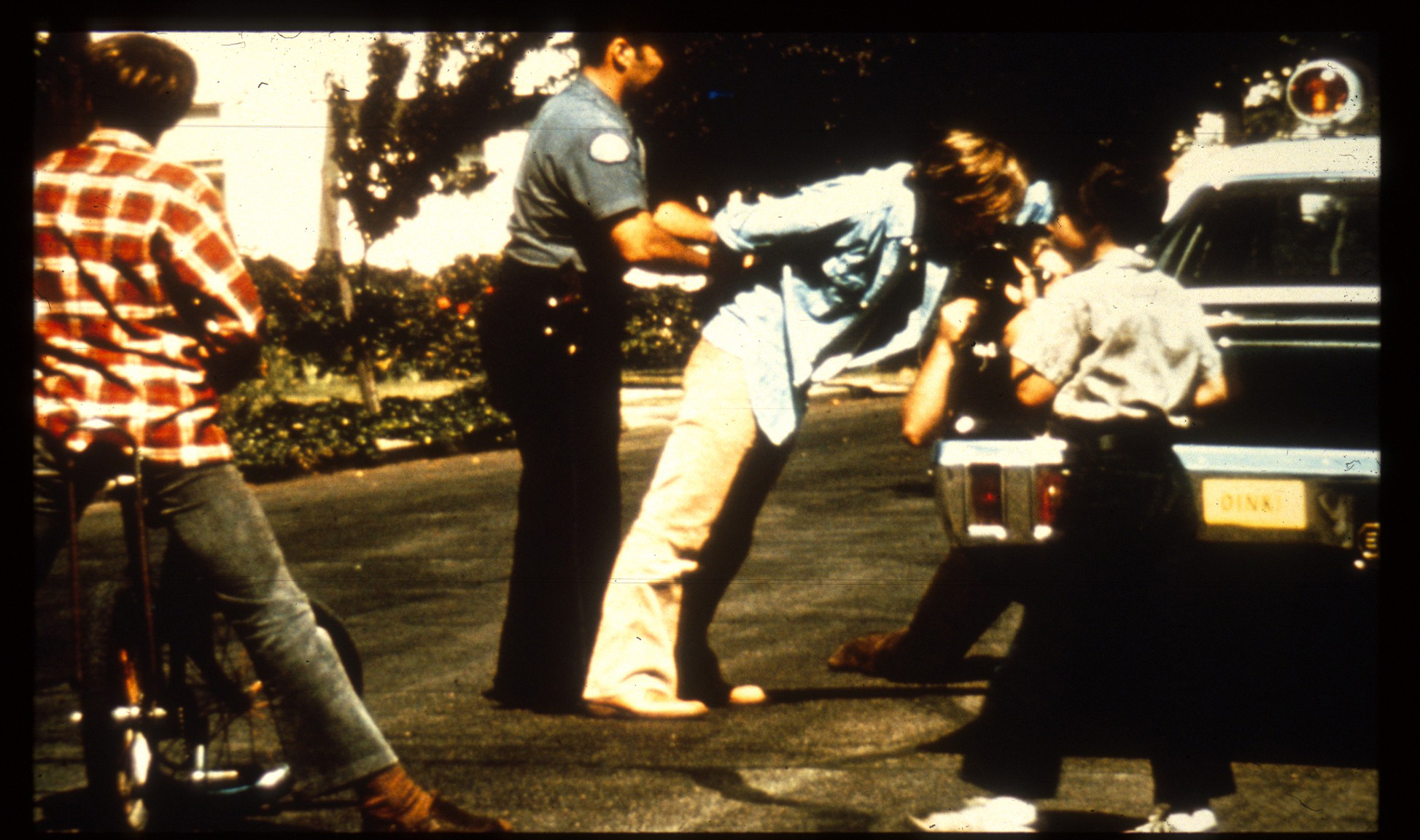 (Image/ Source: prisonexp.org)For the experiment to be as realistic as possible, those who had been assigned the role of a guard would have to simulate an “arrest” for those who would be acting as prisoners. The prisoners were arrested in their own homes, without warning, and taken to the local police station. This is where they would spend the next 2 weeks.
(Image/ Source: prisonexp.org)For the experiment to be as realistic as possible, those who had been assigned the role of a guard would have to simulate an “arrest” for those who would be acting as prisoners. The prisoners were arrested in their own homes, without warning, and taken to the local police station. This is where they would spend the next 2 weeks.Advertisement
2. "Booked" and fingerprinted
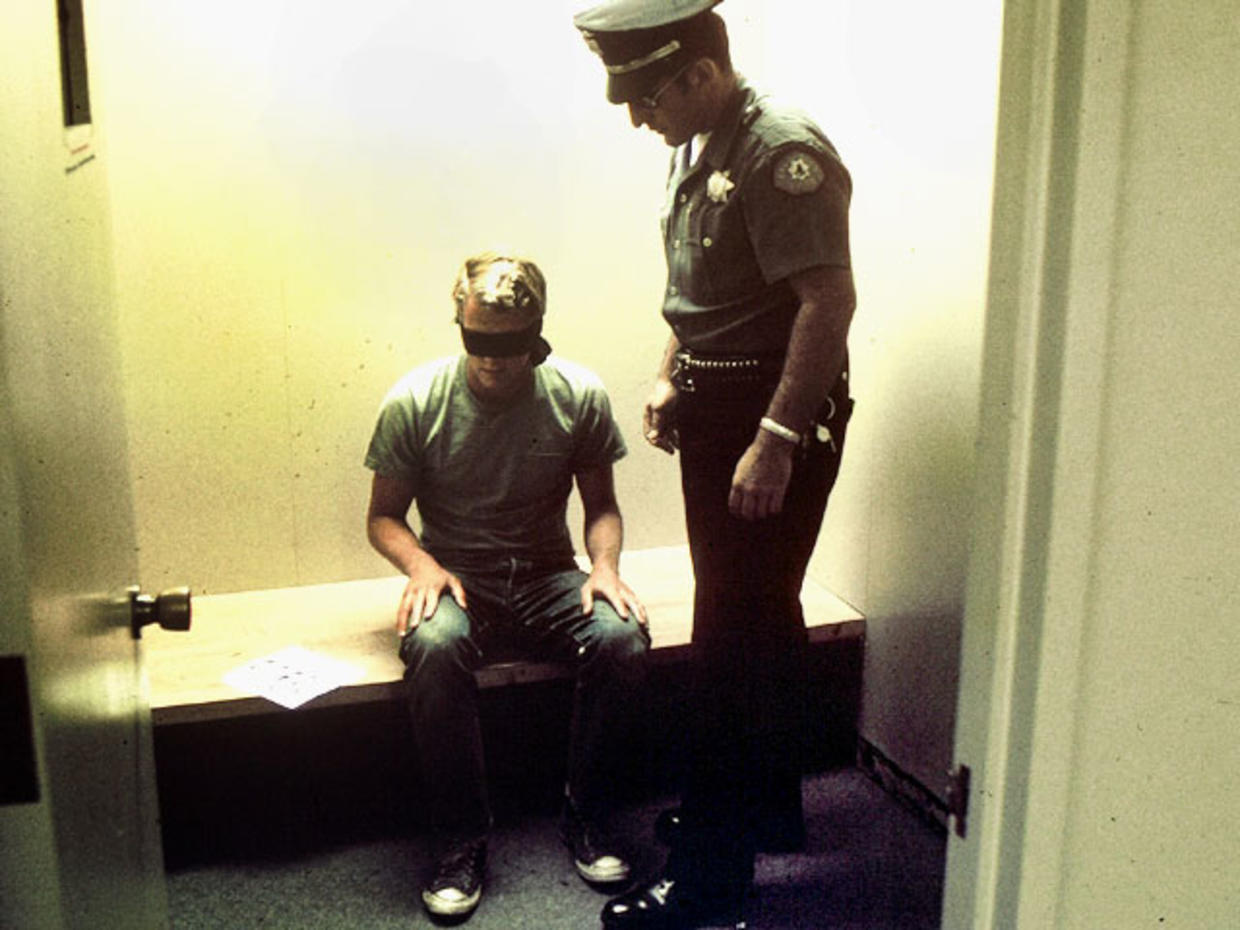 (Image/ Source: cbsnews.com)At the police station, the prisoners were fingerprinted, photographed and “booked” for their alleged charges. After this took place, the prisoners were then given their uniforms and taken to a holding cell to await transportation to the "prison" at Stanford. The prisoners were blindfolded at this stage.
(Image/ Source: cbsnews.com)At the police station, the prisoners were fingerprinted, photographed and “booked” for their alleged charges. After this took place, the prisoners were then given their uniforms and taken to a holding cell to await transportation to the "prison" at Stanford. The prisoners were blindfolded at this stage.Advertisement
3. Set up
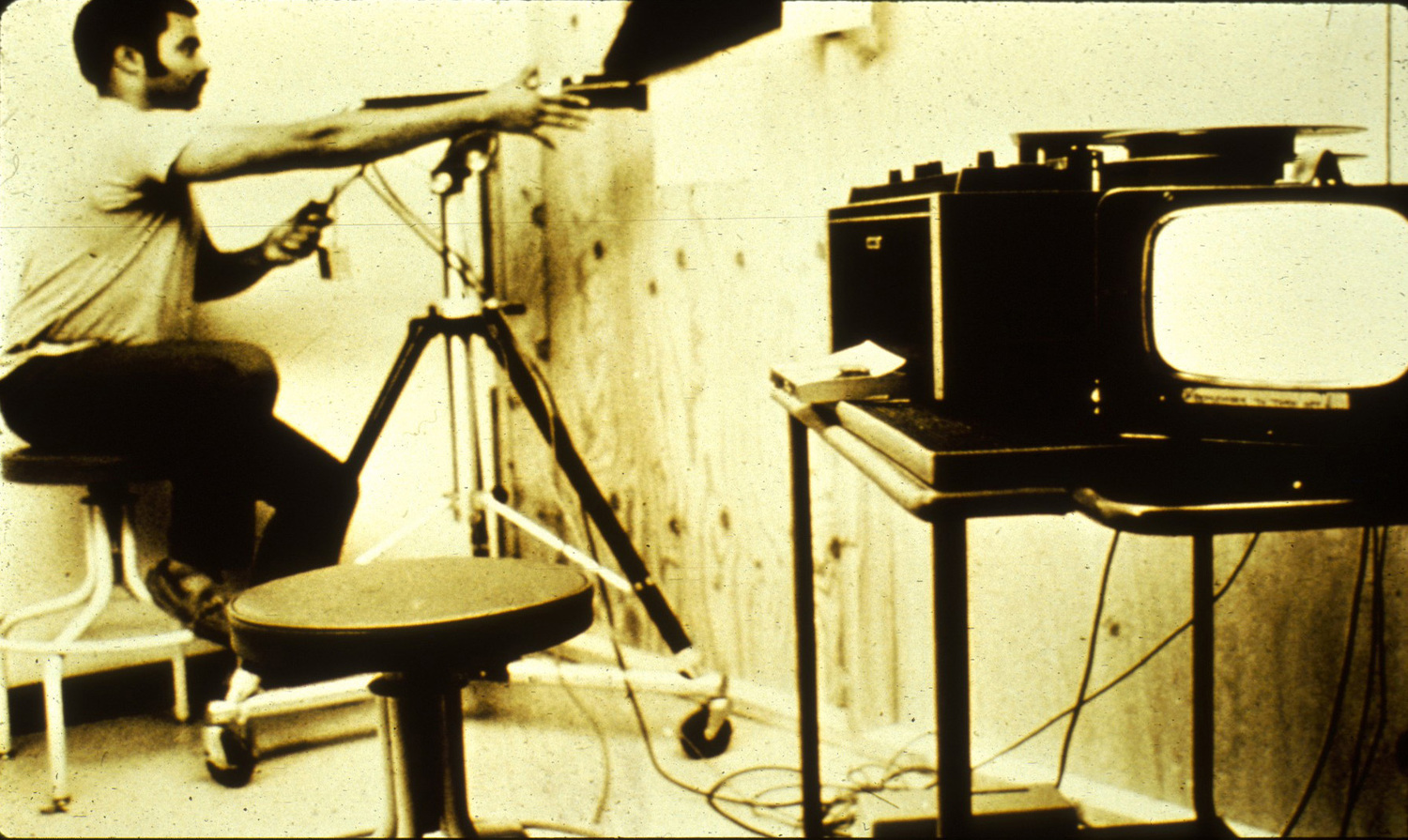 (Image/ Source: prisonexp.org)While the "suspects" were being rounded up, Dr. Phillip G. Zimbardo, who created the experiment, put his team to work as they finished the final touches to the "prison." They nailed bars on cells and set up a closet for solitary confinement - known as "the hole." Real ex-convicts served as consultants to make things as realistic as possible.
(Image/ Source: prisonexp.org)While the "suspects" were being rounded up, Dr. Phillip G. Zimbardo, who created the experiment, put his team to work as they finished the final touches to the "prison." They nailed bars on cells and set up a closet for solitary confinement - known as "the hole." Real ex-convicts served as consultants to make things as realistic as possible.Advertisement
4. Transport to the facilities
 (Image/ Source: britannica.com)Prisoners were then taken to the facility. As they were still blindfolded, they had no idea where the prison was- or what to expect on the other side. As many of them were still reeling from their shock arrest, their journey to the prison itself must have been pretty scary to say the least. But things were about to get worse…
(Image/ Source: britannica.com)Prisoners were then taken to the facility. As they were still blindfolded, they had no idea where the prison was- or what to expect on the other side. As many of them were still reeling from their shock arrest, their journey to the prison itself must have been pretty scary to say the least. But things were about to get worse…Advertisement
5. Searched
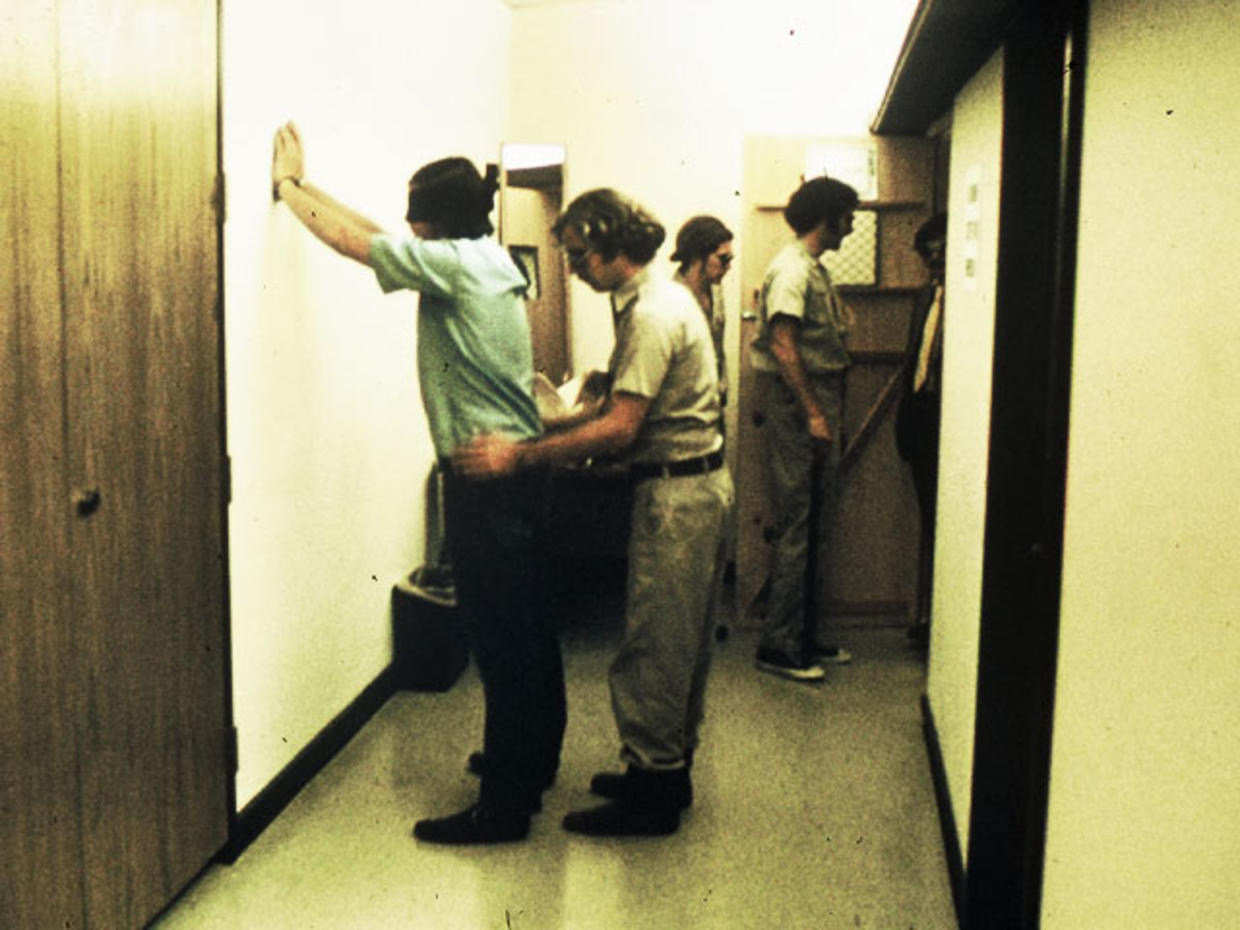 (Image/ Source: cbsnews.com)When they arrived at the facility, the reality of the experiment began to hit home. Prisoners were searched, stripped, and issued a smock with an ID number, stocking cap, and rubber sandals- and each had a chain bolted to his ankle. The chain was used to remind "prisoners" at all times that they were incarcerated and unable to escape.
(Image/ Source: cbsnews.com)When they arrived at the facility, the reality of the experiment began to hit home. Prisoners were searched, stripped, and issued a smock with an ID number, stocking cap, and rubber sandals- and each had a chain bolted to his ankle. The chain was used to remind "prisoners" at all times that they were incarcerated and unable to escape.Advertisement
6. Guards
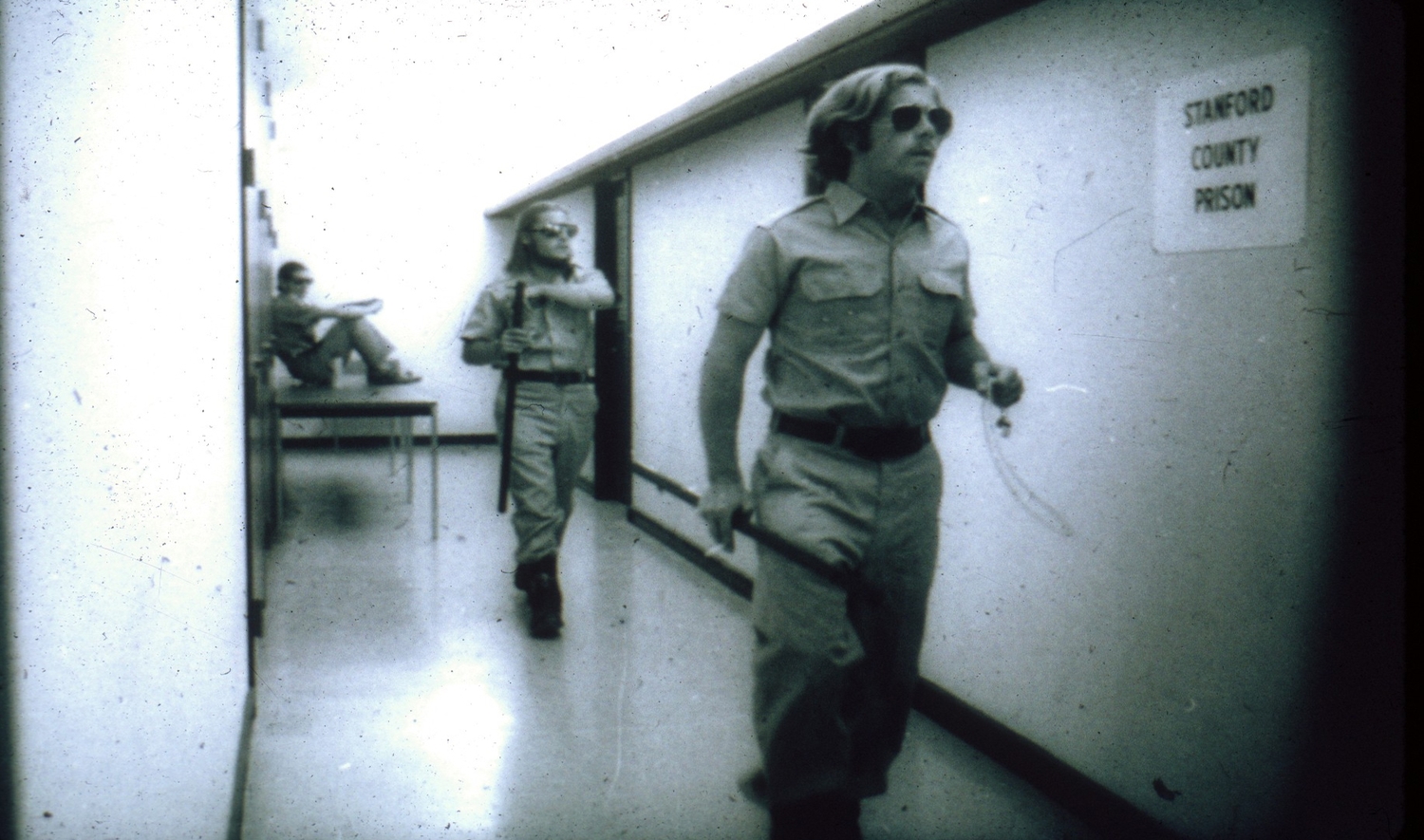 (Image/ Source: prisonexp.org)Guards were kitted out in khakis and mirrored sunglasses, and carried around a whistle and a baton. As all of the “guards” were untrained, the dynamics of the experiment allowed them to do whatever they deemed necessary to maintain law and order. Some of the guards were kind to the prisoners, but others behaved much more sadistically.
(Image/ Source: prisonexp.org)Guards were kitted out in khakis and mirrored sunglasses, and carried around a whistle and a baton. As all of the “guards” were untrained, the dynamics of the experiment allowed them to do whatever they deemed necessary to maintain law and order. Some of the guards were kind to the prisoners, but others behaved much more sadistically.Advertisement
7. Prisoners
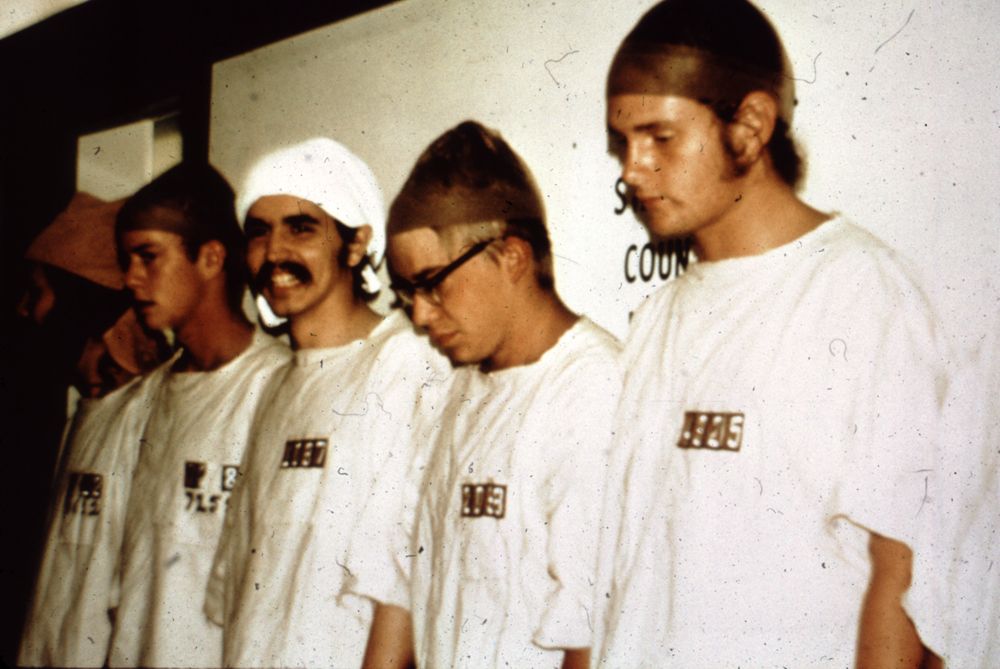 (Image/ Source: insidehighered.com)Prisoners were given their own uniforms. Each of them was dressed in a basic white smock with their number written on it, but no underclothes. They also had a tight nylon cap to cover their hair, but even these became a privilege to wear after a while as the guard’s behaviour became increasingly hostile.
(Image/ Source: insidehighered.com)Prisoners were given their own uniforms. Each of them was dressed in a basic white smock with their number written on it, but no underclothes. They also had a tight nylon cap to cover their hair, but even these became a privilege to wear after a while as the guard’s behaviour became increasingly hostile.Advertisement
8. Push-ups
 (Image/ Source: prisonexp.org)While the guards were not permitted to be physically violent with anyone during the experiment, they decided to come up with some pretty nasty tactics. The first night the prisoners arrived, they decided to wake them up at 2.30 am and made them memorise their prison numbers and do push-ups. And this didn’t go down well with the prisoners at all…
(Image/ Source: prisonexp.org)While the guards were not permitted to be physically violent with anyone during the experiment, they decided to come up with some pretty nasty tactics. The first night the prisoners arrived, they decided to wake them up at 2.30 am and made them memorise their prison numbers and do push-ups. And this didn’t go down well with the prisoners at all…Advertisement
9. Rebellion
 (Image/ Source: prisonexp.org)After the guards’ behaviour, the prisoners decided to fight back- much to the surprise of psychologists. The prisoners barricaded themselves in their cells, ripped off their numbers and caps, and began taunting the guards. The guards quickly retaliated and shot fire extinguishers at the prisoners, and some even had their clothes taken from them.
(Image/ Source: prisonexp.org)After the guards’ behaviour, the prisoners decided to fight back- much to the surprise of psychologists. The prisoners barricaded themselves in their cells, ripped off their numbers and caps, and began taunting the guards. The guards quickly retaliated and shot fire extinguishers at the prisoners, and some even had their clothes taken from them.Advertisement
11. Privilege cell
 (Image/ Source: prisonexp.org)At this point, the guards decided to set up a new system. set up a "privilege cell" where the most cooperative "prisoners" got their clothes and beds back and were allowed to wash, brush their teeth, eat, and sleep. But then the guards swapped the troublemakers into the "privilege cells," which confused the prisoners.
(Image/ Source: prisonexp.org)At this point, the guards decided to set up a new system. set up a "privilege cell" where the most cooperative "prisoners" got their clothes and beds back and were allowed to wash, brush their teeth, eat, and sleep. But then the guards swapped the troublemakers into the "privilege cells," which confused the prisoners.Advertisement
12. Prisoners wake up in their cells
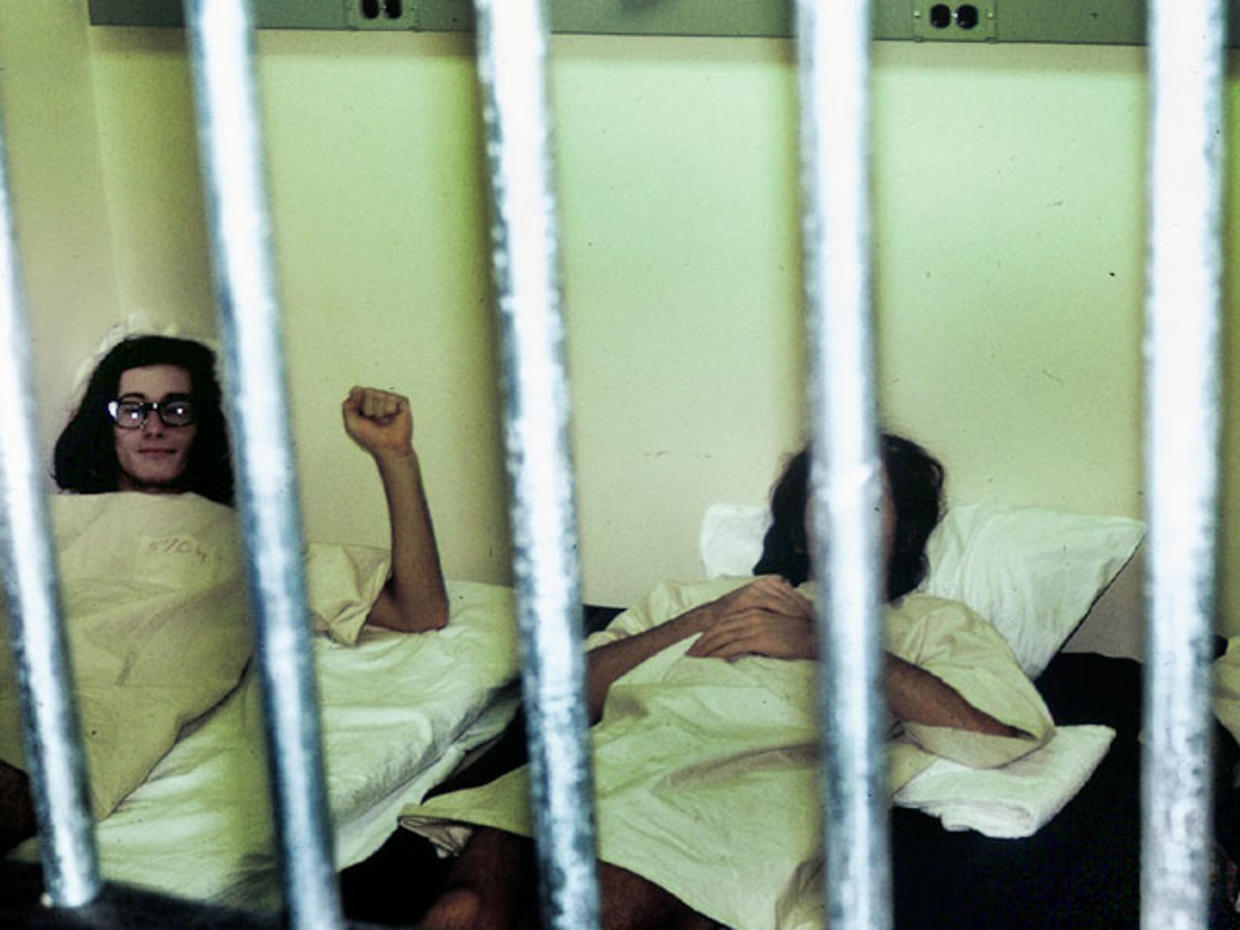 (Image/ Source: cbsnews.com)The prisoners were struggling to keep up with the decisions and behaviours of the guards, but at this point in the experiment, a lot of them were still fairly upbeat. They would wake up in their shared cells each day together, and the chatter between them would help boost their morale when things got tough.
(Image/ Source: cbsnews.com)The prisoners were struggling to keep up with the decisions and behaviours of the guards, but at this point in the experiment, a lot of them were still fairly upbeat. They would wake up in their shared cells each day together, and the chatter between them would help boost their morale when things got tough.Advertisement
13. Dehumanising tactics
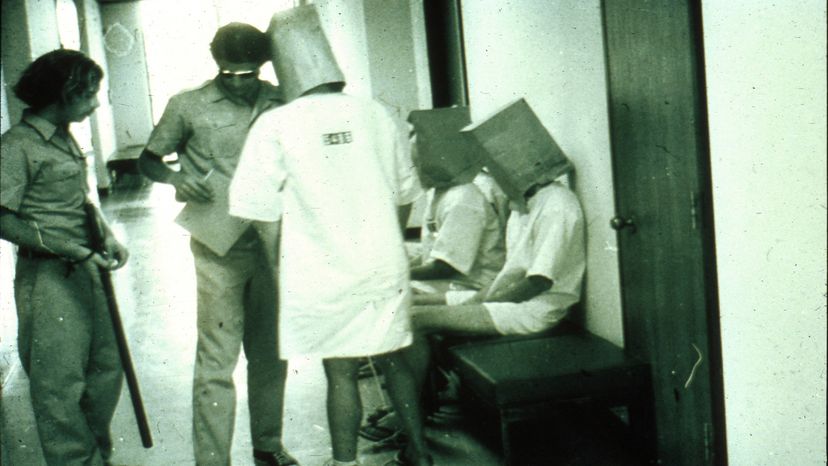 (Image/ Source: science.howstuffworks.com)But the guards continued with their dehumanising tactics, and things got pretty dark. They forced the prisoners to wear bags on their heads as they walked around the facility- which was just one of the horrific methods used by them. Unsurprisingly, the family members of the prisoners started to fear for the mental health of their loved ones.
(Image/ Source: science.howstuffworks.com)But the guards continued with their dehumanising tactics, and things got pretty dark. They forced the prisoners to wear bags on their heads as they walked around the facility- which was just one of the horrific methods used by them. Unsurprisingly, the family members of the prisoners started to fear for the mental health of their loved ones.Advertisement
14. Prisoner 8612
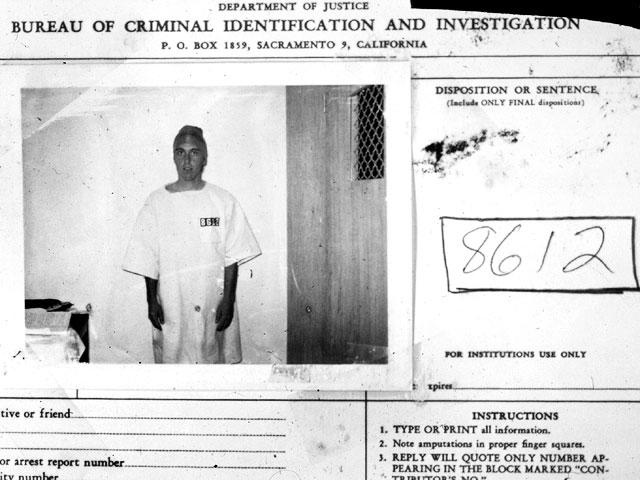 (Image/ Source: cbsnews.com)36 hours into the experiment, prisoner 8612 flew into a desperate rage. As his time in the facility began to take its toll, he feared that he and his fellow prisoners couldn’t quit the experiment. It wasn't true, of course, but this message terrified the other prisoners, who were all convinced that they couldn’t escape.
(Image/ Source: cbsnews.com)36 hours into the experiment, prisoner 8612 flew into a desperate rage. As his time in the facility began to take its toll, he feared that he and his fellow prisoners couldn’t quit the experiment. It wasn't true, of course, but this message terrified the other prisoners, who were all convinced that they couldn’t escape.Advertisement
15. Zimbardo brushes off concerns from family members
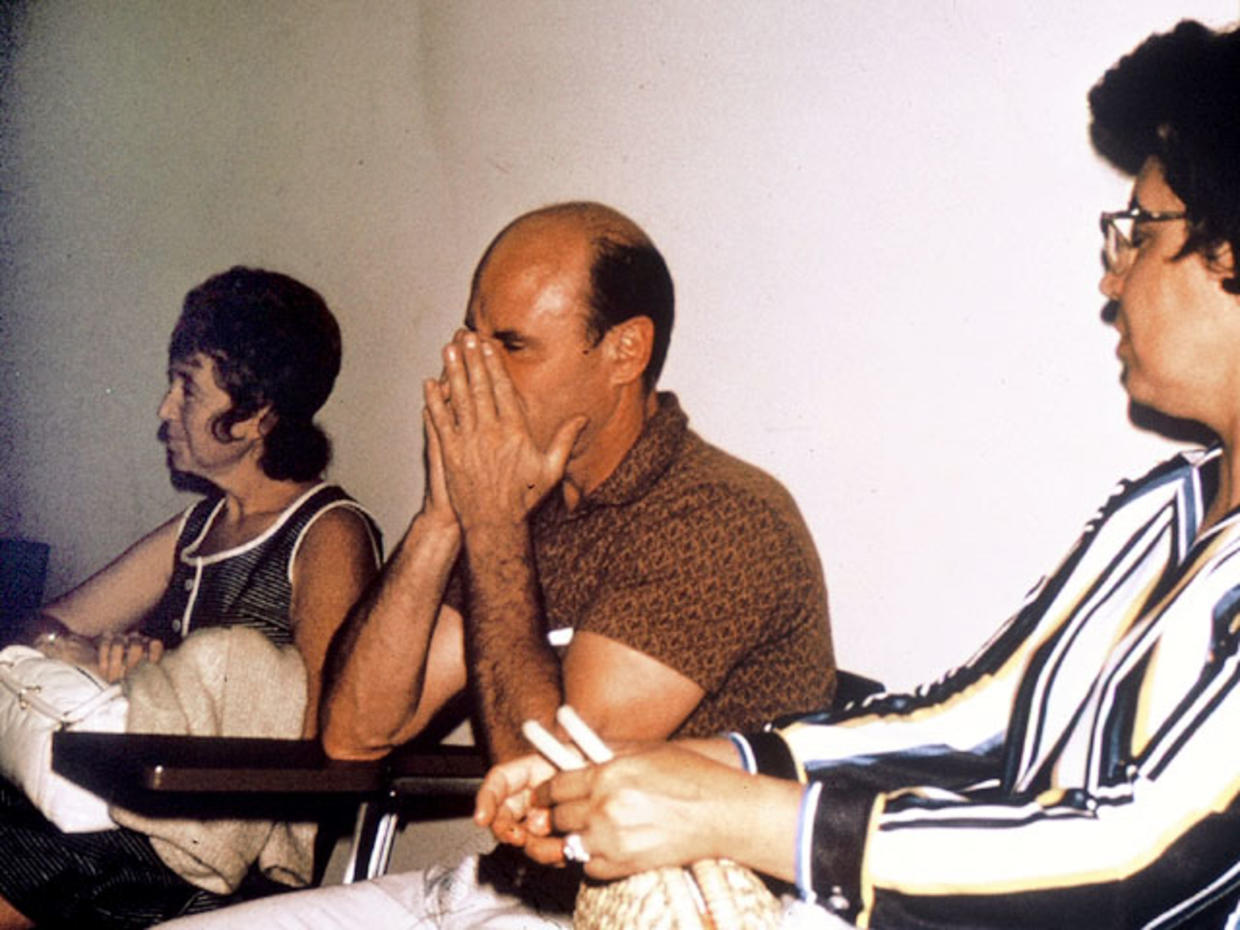 (Image/ Source: cbsnews.com)Zimbardo decided to set up visiting hours for some of the prisoners’ friends and family. He had the prisoners clean themselves and their cells, and fed them a big meal so worried parents wouldn't insist that their kids leave the study. However, family members continued to express their concerns about the experiment to Zimbardo- but he brushed off their concerns.
(Image/ Source: cbsnews.com)Zimbardo decided to set up visiting hours for some of the prisoners’ friends and family. He had the prisoners clean themselves and their cells, and fed them a big meal so worried parents wouldn't insist that their kids leave the study. However, family members continued to express their concerns about the experiment to Zimbardo- but he brushed off their concerns.Advertisement
16. Potential prison break
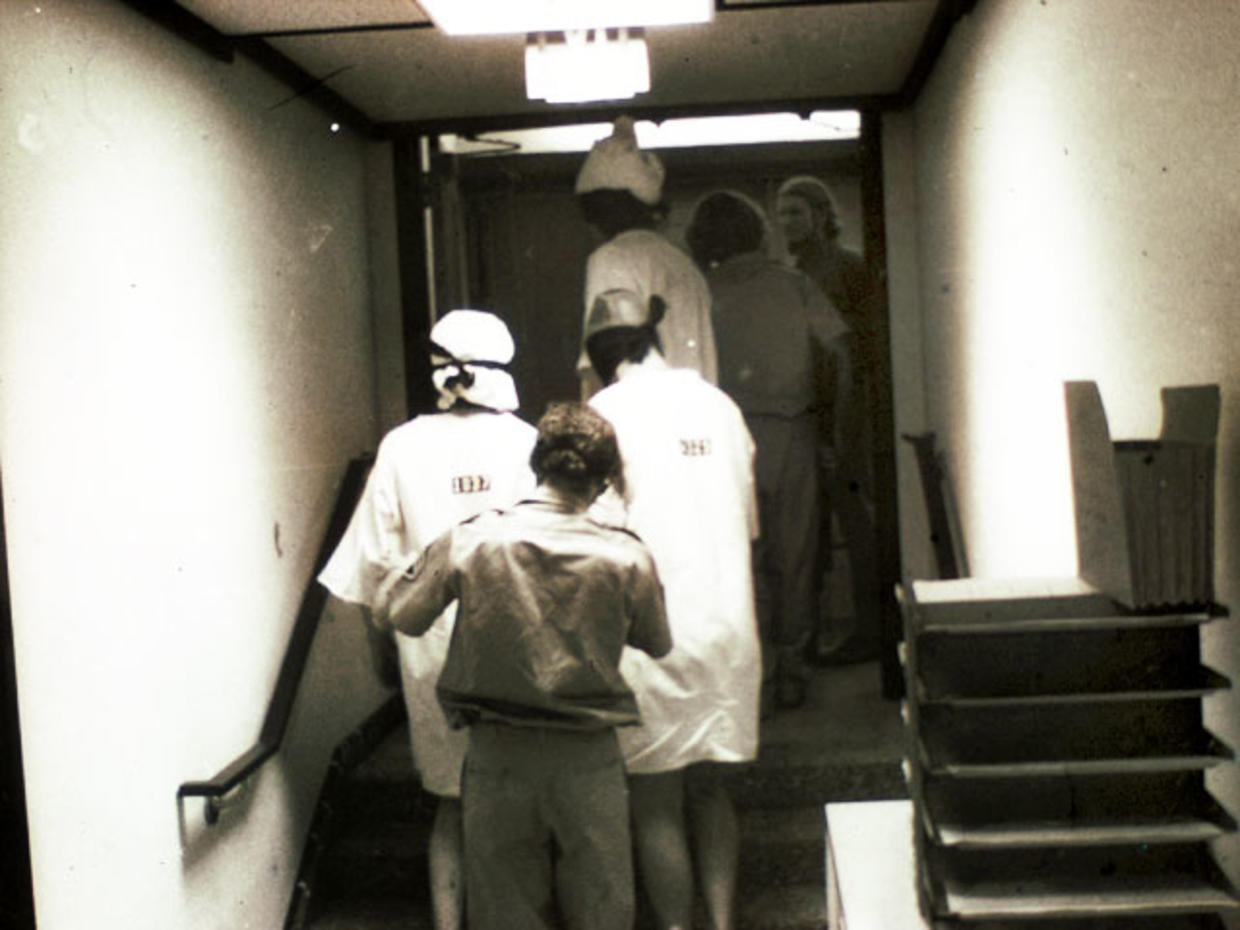 (Image/ Source: cbsnews.com)After his outburst, Prisoner 8612 was released from the experiment, as there were growing fears for his mental health. But Zimbardo and his team still couldn’t be seen as ethical. After rumours grew that Prisoner 8612 would be staging a prison break to free the rest of the prisoners (which wasn’t true) Zimbardo leapt into action. He tried to transfer the prisoners to a real-life prison facility, but he was unsuccessful.
(Image/ Source: cbsnews.com)After his outburst, Prisoner 8612 was released from the experiment, as there were growing fears for his mental health. But Zimbardo and his team still couldn’t be seen as ethical. After rumours grew that Prisoner 8612 would be staging a prison break to free the rest of the prisoners (which wasn’t true) Zimbardo leapt into action. He tried to transfer the prisoners to a real-life prison facility, but he was unsuccessful.Advertisement
17. Zimbardo gets power hungry
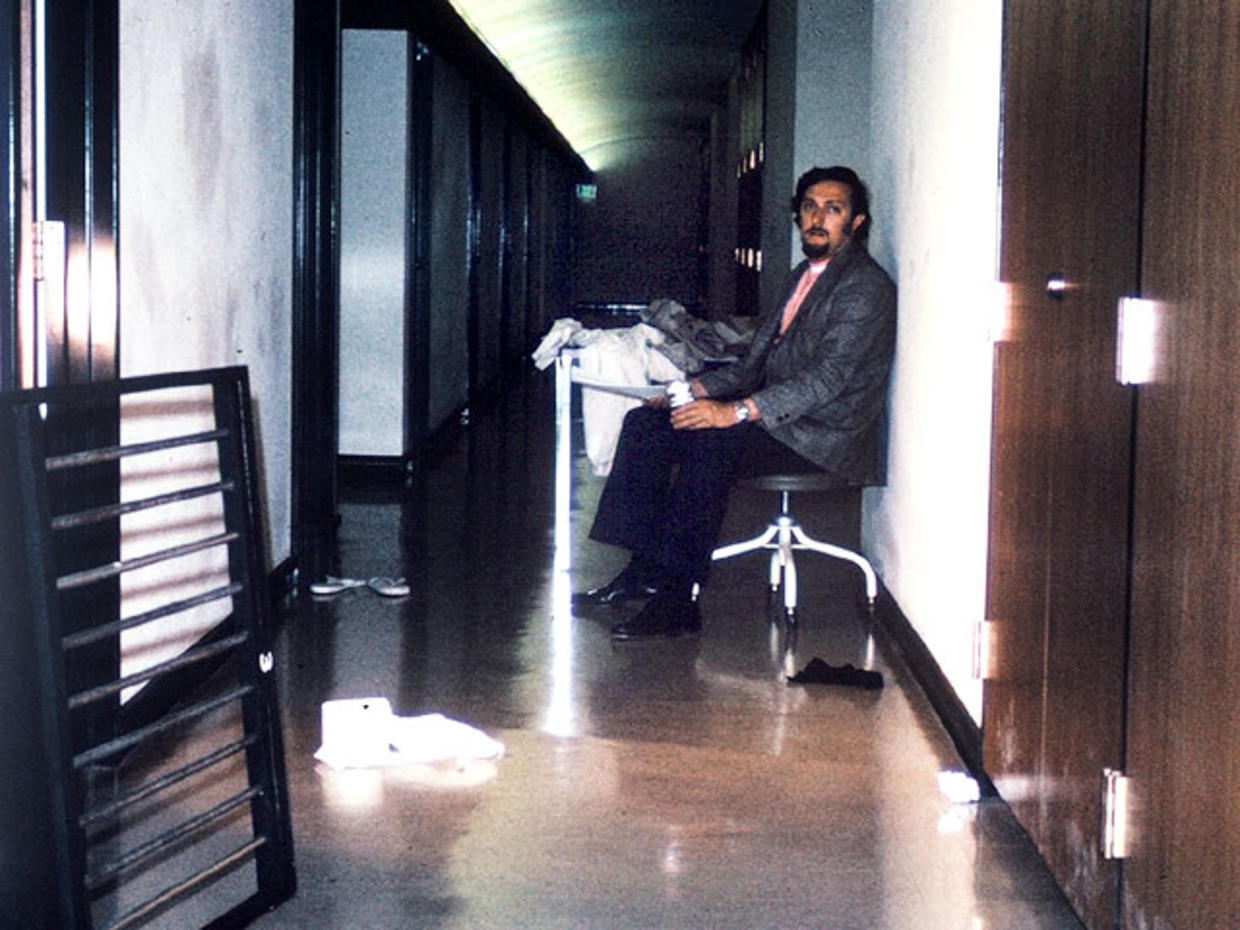 (Image/ Source: cbsnews.com)Zimbardo waited all night, but the alleged prison break never actually happened. At this point, Zimbardo’s own team started to become concerned for him; like his study's participants, he was beginning to blur the lines between the experiment and reality. Zimbardo was acting like an actual prison superintendent, and refused to listen to any more concerned family members.
(Image/ Source: cbsnews.com)Zimbardo waited all night, but the alleged prison break never actually happened. At this point, Zimbardo’s own team started to become concerned for him; like his study's participants, he was beginning to blur the lines between the experiment and reality. Zimbardo was acting like an actual prison superintendent, and refused to listen to any more concerned family members.Advertisement
18. Tasks
 (Image/ Source: prisonexp.org)Zimbardo’s hysteria rubbed off on a lot of the prison guards, who were continuing to enjoy their power against the prisoners. They forced the prisoners into yet more unpleasant tasks, like intense exercises and scrubbing toilets, which caused a lot of the prisoners to finally break down. But Zimbardo pushed on with the study.
(Image/ Source: prisonexp.org)Zimbardo’s hysteria rubbed off on a lot of the prison guards, who were continuing to enjoy their power against the prisoners. They forced the prisoners into yet more unpleasant tasks, like intense exercises and scrubbing toilets, which caused a lot of the prisoners to finally break down. But Zimbardo pushed on with the study.Advertisement
19. Priest interviews
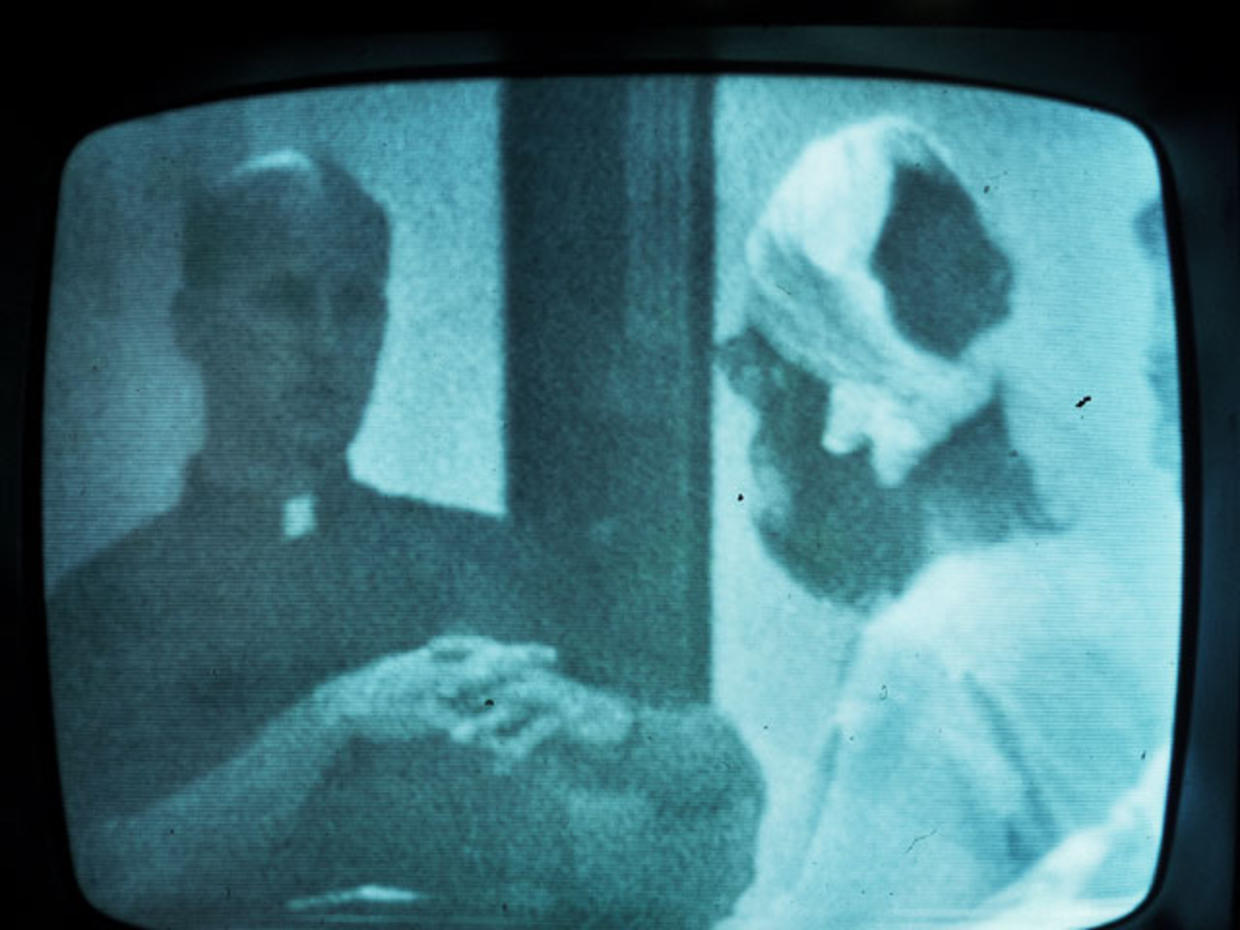 (Image/ Source: cbsnews.com)To make the experiment even more realistic, Zimbardo decided to call a priest in. He was surprised to see the prisoners introduce themselves with their prisoner numbers instead of their names, which showed that they were starting to lose their grip on reality. When the priest asked prisoners why they were in jail, or if they needed a lawyer, some of them actually took the priest up on this.
(Image/ Source: cbsnews.com)To make the experiment even more realistic, Zimbardo decided to call a priest in. He was surprised to see the prisoners introduce themselves with their prisoner numbers instead of their names, which showed that they were starting to lose their grip on reality. When the priest asked prisoners why they were in jail, or if they needed a lawyer, some of them actually took the priest up on this.Advertisement
20. Fears for mental health safety
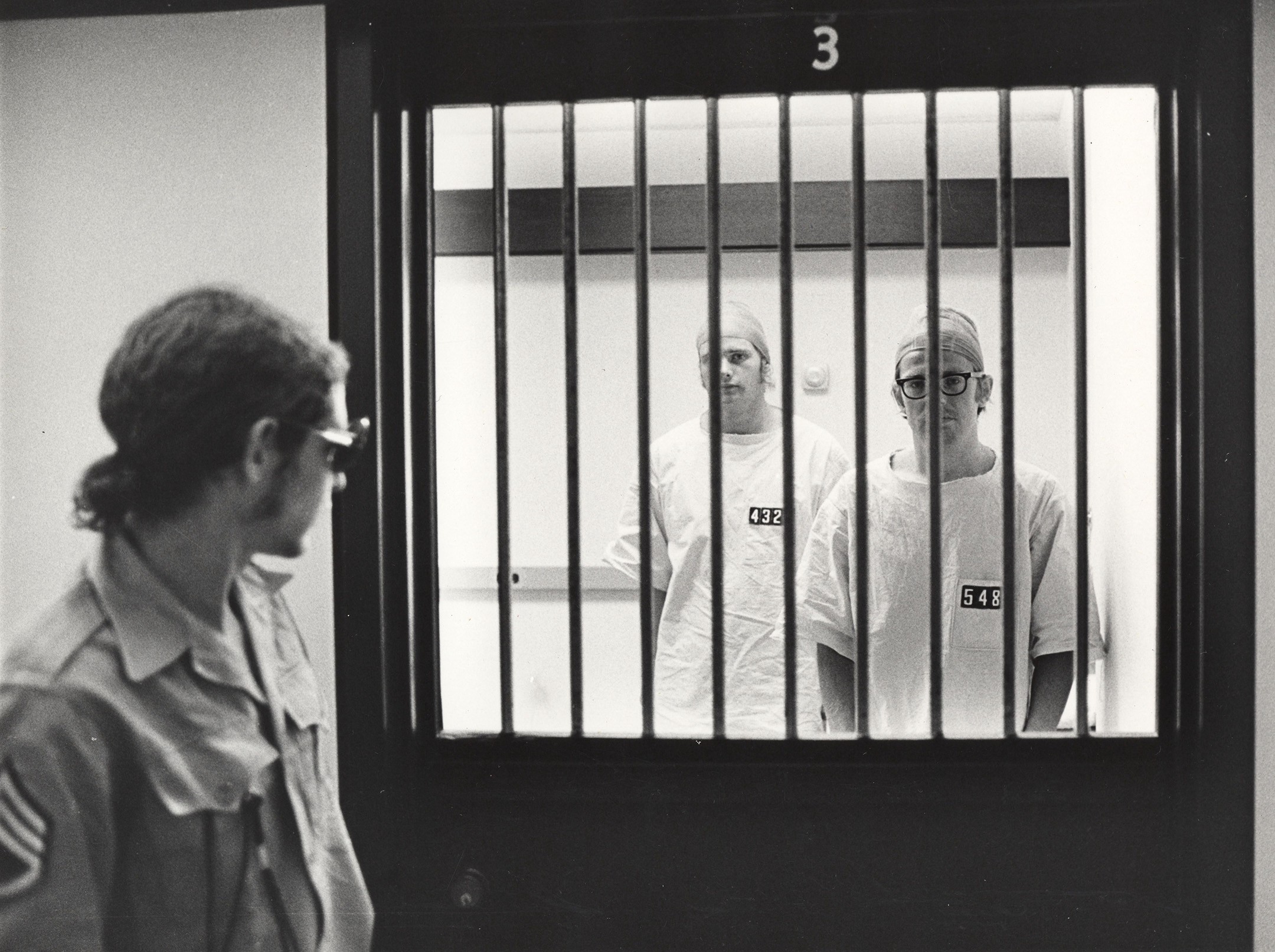 (Image/ Source: peachyessay.com)The prisoners continued to struggle with their mental health. One of them stopped eating meals and broke down in tears. Others wanted to go home. While Zimbardo and his team reminded the prisoners they could leave at any point, they refused, as they didn’t want to be seen as “bad prisoners”. So Zimbardo pushed on with the final stages of the experiment.
(Image/ Source: peachyessay.com)The prisoners continued to struggle with their mental health. One of them stopped eating meals and broke down in tears. Others wanted to go home. While Zimbardo and his team reminded the prisoners they could leave at any point, they refused, as they didn’t want to be seen as “bad prisoners”. So Zimbardo pushed on with the final stages of the experiment.Advertisement
21. Parole board
 (Image/ Source: cbsnews.org)Just like a real-life prison, Zimbardo wanted to create a “parole board”. But this board was made up of psychology department secretaries and graduate students. They decided to meet with certain prisoners who “thought they had grounds for parole” to observe their behaviour. However, most of the prisoners still didn’t feel like they could leave.
(Image/ Source: cbsnews.org)Just like a real-life prison, Zimbardo wanted to create a “parole board”. But this board was made up of psychology department secretaries and graduate students. They decided to meet with certain prisoners who “thought they had grounds for parole” to observe their behaviour. However, most of the prisoners still didn’t feel like they could leave.Advertisement
22. The guards tone down their behaviour
 (Image/ Source: cbsnews.org)As the prisoners continued to lose their sense of reality, some of the guards decided to tone down their behaviour and act more kindly to them. This was welcomed by the prisoners. However, there were still a minority of guards that continued their harsh treatment, including one that the prisoners nicknamed “John Wayne”.
(Image/ Source: cbsnews.org)As the prisoners continued to lose their sense of reality, some of the guards decided to tone down their behaviour and act more kindly to them. This was welcomed by the prisoners. However, there were still a minority of guards that continued their harsh treatment, including one that the prisoners nicknamed “John Wayne”.Advertisement
23. Prisoner 819 breaks down
 (Image/ Source: prisonexp.org)At this point, Prisoner 819 was so distressed that Zimbardo himself came to speak to him. He and his psychologists removed the chain from his foot, the cap off his head, and told him to go and rest in a room that was adjacent to the prison yard. They told him they would get him some food and then take him to see a doctor.
(Image/ Source: prisonexp.org)At this point, Prisoner 819 was so distressed that Zimbardo himself came to speak to him. He and his psychologists removed the chain from his foot, the cap off his head, and told him to go and rest in a room that was adjacent to the prison yard. They told him they would get him some food and then take him to see a doctor.Advertisement
24. Meeting
 (Image/ Source: prisonexp.org)The other prisoners mocked Prisoner 819 as he broke down. They chanted at him through the wall of the resting room, so the psychologists called a meeting. They eventually decided to invite Prisoner 819 to leave, but Prisoner 819 was still scared to do so. Zimbardo told him: “Listen, you are not #819. You are [his name], and my name is Dr. Zimbardo. I am a psychologist, not a prison superintendent, and this is not a real prison. This is just an experiment, and those are students, not prisoners, just like you. Let's go.”
(Image/ Source: prisonexp.org)The other prisoners mocked Prisoner 819 as he broke down. They chanted at him through the wall of the resting room, so the psychologists called a meeting. They eventually decided to invite Prisoner 819 to leave, but Prisoner 819 was still scared to do so. Zimbardo told him: “Listen, you are not #819. You are [his name], and my name is Dr. Zimbardo. I am a psychologist, not a prison superintendent, and this is not a real prison. This is just an experiment, and those are students, not prisoners, just like you. Let's go.”Advertisement
25. Prisoner 819 leaves
 (Image/ Source: mercurynews.com)After speaking with Zimbardo, Prisoner 819 seemed to come to his senses. He stopped crying and immediately made preparations to leave the experiment six days in. Prisoner 819’s departure led to a debate among Zimbardo and his team, as they were unsure whether they could realistically carry on with the study.
(Image/ Source: mercurynews.com)After speaking with Zimbardo, Prisoner 819 seemed to come to his senses. He stopped crying and immediately made preparations to leave the experiment six days in. Prisoner 819’s departure led to a debate among Zimbardo and his team, as they were unsure whether they could realistically carry on with the study.Advertisement
26. Parents speak to Zimbardo
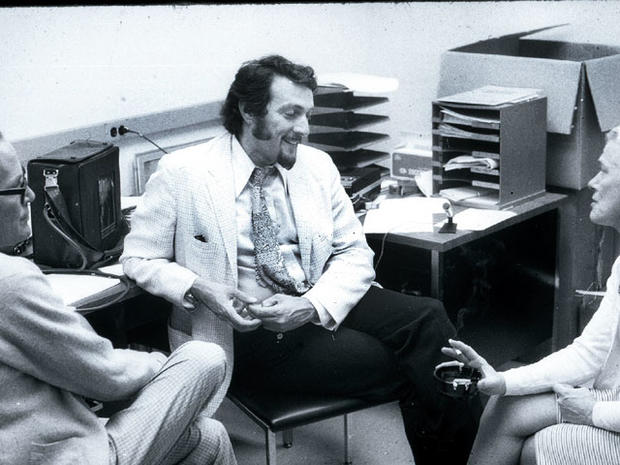 (Image/ Source: cbsnews.com)While Zimbardo and his team were still in discussions, the parents of the students taking part in the study got in touch. They were consulting with lawyers to pull their children out of the experiment, and Zimbardo was left with no choice but to abandon the study. He wanted it to run for two weeks, but it only ran for half of that time.
(Image/ Source: cbsnews.com)While Zimbardo and his team were still in discussions, the parents of the students taking part in the study got in touch. They were consulting with lawyers to pull their children out of the experiment, and Zimbardo was left with no choice but to abandon the study. He wanted it to run for two weeks, but it only ran for half of that time.Advertisement
27. The prisoners are notified
 (Image/ Source: cbsnews.com)Prisoners were then told that the experiment had come to an end and they were free to leave. They had no idea that this was going to happen, so at first, they found it difficult to believe. But as you can see, they were pretty happy about it in the end! But Zimbardo wasn’t quite as happy as they were- and he ended up in a lot of trouble…
(Image/ Source: cbsnews.com)Prisoners were then told that the experiment had come to an end and they were free to leave. They had no idea that this was going to happen, so at first, they found it difficult to believe. But as you can see, they were pretty happy about it in the end! But Zimbardo wasn’t quite as happy as they were- and he ended up in a lot of trouble…Advertisement
28. Investigation
 (Image/ Source: newscientist.com)It turned out that, despite the pleas from parents, Zimbardo had only pulled the plug on the experiment because his boss Christina Maslach, a recent Stanford PhD, strongly objected to the experiment when she saw the prisoners being abused by the guards. She was brought in to conduct interviews with the participants, but immediately ordered Zimbardo to stop. Out of fifty people present for the study, she was the only person who questioned the abuse.
(Image/ Source: newscientist.com)It turned out that, despite the pleas from parents, Zimbardo had only pulled the plug on the experiment because his boss Christina Maslach, a recent Stanford PhD, strongly objected to the experiment when she saw the prisoners being abused by the guards. She was brought in to conduct interviews with the participants, but immediately ordered Zimbardo to stop. Out of fifty people present for the study, she was the only person who questioned the abuse.Advertisement
29. Back to reality
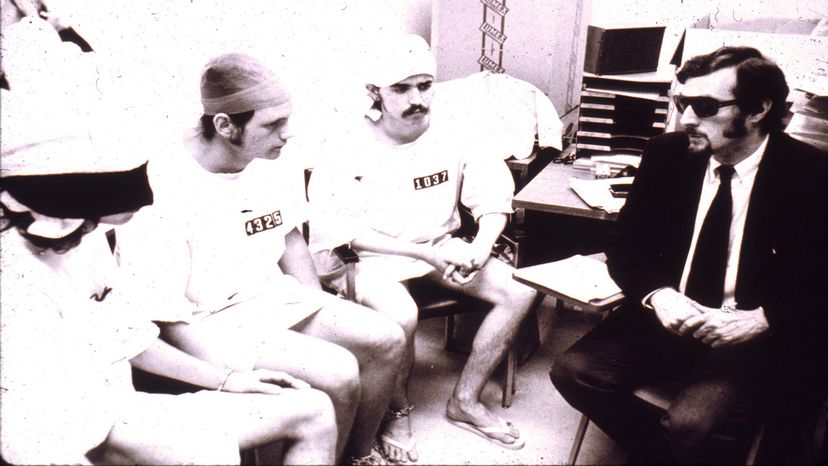 (Image/ Source: science.howstuffworks.com)Years later, this picture would haunt Zimbardo. In 2008, he wrote about his role in the experiment and said: “it wasn't until much later that I realized how far into my prison role I was at that point -- that I was thinking like a prison superintendent rather than a research psychologist.” This wasn’t something he had realised at the time.
(Image/ Source: science.howstuffworks.com)Years later, this picture would haunt Zimbardo. In 2008, he wrote about his role in the experiment and said: “it wasn't until much later that I realized how far into my prison role I was at that point -- that I was thinking like a prison superintendent rather than a research psychologist.” This wasn’t something he had realised at the time.Advertisement
30. Conclusion
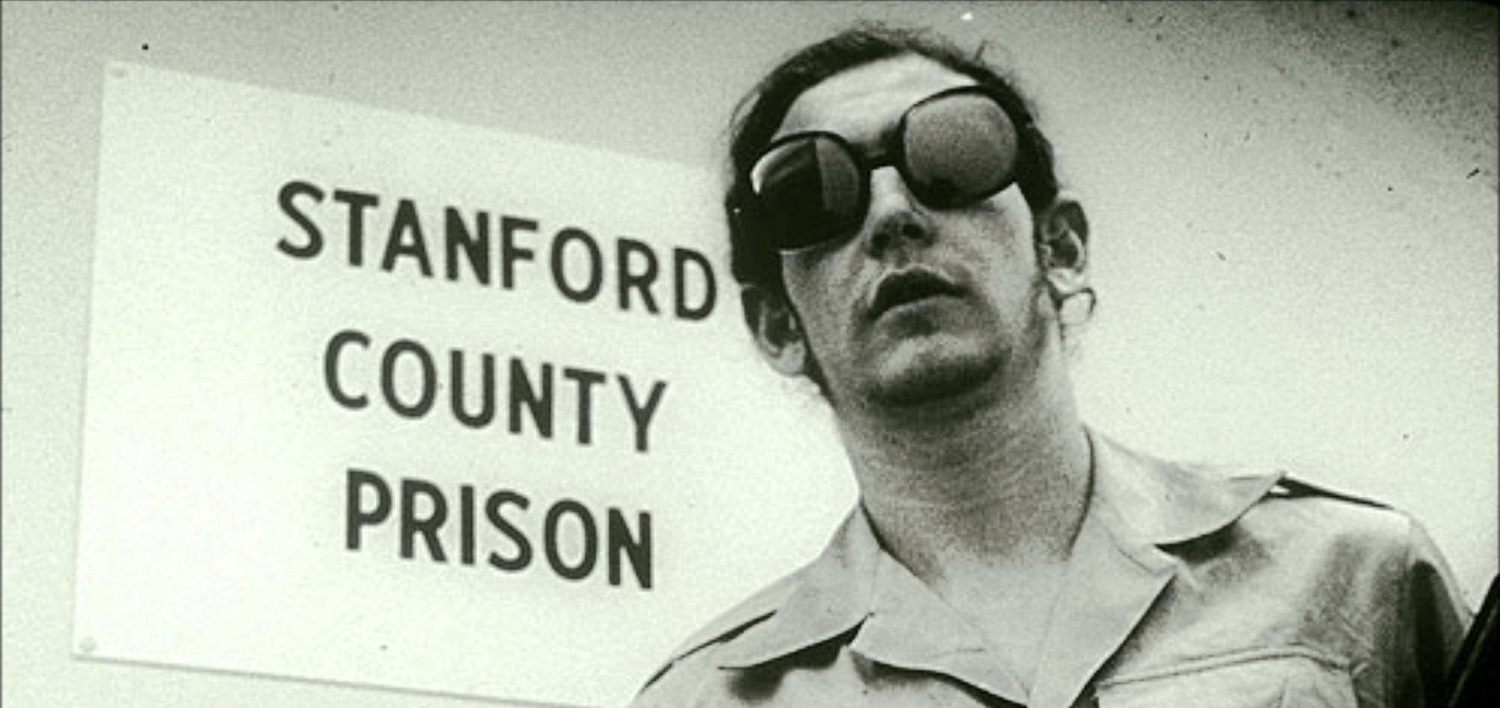 (Image/ Source: prisonexp.org)This image has been used many times to highlight some of Zimbardo’s later theories about the experiment. He pointed out that just about everyone fills the role of "prisoner" or "guard" at some point in their lives- like when a boss restricts your actions at work, or a parent disciplines a child. Zimbardo concluded that human behaviour is under situational control more than we imagine or want to believe and admit”- do you think he’s right?
(Image/ Source: prisonexp.org)This image has been used many times to highlight some of Zimbardo’s later theories about the experiment. He pointed out that just about everyone fills the role of "prisoner" or "guard" at some point in their lives- like when a boss restricts your actions at work, or a parent disciplines a child. Zimbardo concluded that human behaviour is under situational control more than we imagine or want to believe and admit”- do you think he’s right?Advertisement
31. The Ad For Participants
 Image Source/ PrisonExp.orgThe initial ad printed to entice male students to the psychological prison experiment - you can see the pay of $15 a day, which seems measly compared to the psychological torment they had to go through. Though, for a student, anything is better than nothing.
Image Source/ PrisonExp.orgThe initial ad printed to entice male students to the psychological prison experiment - you can see the pay of $15 a day, which seems measly compared to the psychological torment they had to go through. Though, for a student, anything is better than nothing.Advertisement
32. The Prison Is Constructed
 Image Source/ PrisonExp.orgObviously not being able to use a real prison, the people in charge of this study had to build the 'prison' ready for the study, where the participants would spend their time. Even looking at this now, it'd be hard to believe you're in a prison, but it just goes to show the psychological influence that went onto the students to begin believing they might never get out.
Image Source/ PrisonExp.orgObviously not being able to use a real prison, the people in charge of this study had to build the 'prison' ready for the study, where the participants would spend their time. Even looking at this now, it'd be hard to believe you're in a prison, but it just goes to show the psychological influence that went onto the students to begin believing they might never get out.Advertisement
33. The Prisoners Were Transported
 Image Source/ PrisonExp.orgAs well as enacting a fake arrest, the prisoners would also be transported in a police car to the police station and then to the prison in the same way a real prisoner would. They didn't use any old car, as you can see, it was an authentic police vehicle.
Image Source/ PrisonExp.orgAs well as enacting a fake arrest, the prisoners would also be transported in a police car to the police station and then to the prison in the same way a real prisoner would. They didn't use any old car, as you can see, it was an authentic police vehicle.Advertisement
34. The Prisoners Were Booked In
 Image Source/ PrisonExp.orgThe experiment went even further in its authenticity by booking the prisoners in in the usual way, too, and not just bypassing this stage and sending them straight to their 'cell'. The prisoners were actually booked in in the same way a real prisoner would be, such as taking their fingerprints and logging them.
Image Source/ PrisonExp.orgThe experiment went even further in its authenticity by booking the prisoners in in the usual way, too, and not just bypassing this stage and sending them straight to their 'cell'. The prisoners were actually booked in in the same way a real prisoner would be, such as taking their fingerprints and logging them.Advertisement
35. Prisoners Were Often Blindfolded
 Image Source/ PrisonExp.orgThis prisoner doesn't seem too phased by being blindfolded at this point, but presumably because this was the very beginning of the experiment and the student might have simply thought it was going to be a breeze. Once in the real prison conditions, being blindfolded might be more terrifying.
Image Source/ PrisonExp.orgThis prisoner doesn't seem too phased by being blindfolded at this point, but presumably because this was the very beginning of the experiment and the student might have simply thought it was going to be a breeze. Once in the real prison conditions, being blindfolded might be more terrifying.Advertisement
36. The Prisoners Also Wore Shackles
 Image Source/ PrisonExp.orgBoth literal and symbolic, these shackles were attached to each man's ankle as a reminder of their imprisonment. But each student didn't just have to wear a pair of shackles - every man had one ankle shackled to the ankle of another.
Image Source/ PrisonExp.orgBoth literal and symbolic, these shackles were attached to each man's ankle as a reminder of their imprisonment. But each student didn't just have to wear a pair of shackles - every man had one ankle shackled to the ankle of another.Advertisement
37. The Prisoners Asleep
 Image Source/ PrisonExp.orgYou might say that even some real life prison cells are better than these, with a real prisoner being able to have much more space and perhaps a private cell. But here you can see how cramped together the experimental prisoners are, as well as the beds being tiny without any obvious covers to stay warm.
Image Source/ PrisonExp.orgYou might say that even some real life prison cells are better than these, with a real prisoner being able to have much more space and perhaps a private cell. But here you can see how cramped together the experimental prisoners are, as well as the beds being tiny without any obvious covers to stay warm.Advertisement
38. The Guard Shift Rotation
 Image Source/ PrisonExp.orgTo make the prison experiment even more authentic, they had actual guard shifts and rotations where different 'guards' would take over shifts. It wasn't just that they left the prisoners unattended from time to time because they knew it was an experiment - there had to be a proper guard shift in place.
Image Source/ PrisonExp.orgTo make the prison experiment even more authentic, they had actual guard shifts and rotations where different 'guards' would take over shifts. It wasn't just that they left the prisoners unattended from time to time because they knew it was an experiment - there had to be a proper guard shift in place.Advertisement
39. An Extinguisher Used Against A Prison Revolt
 Image Source/ PrisonExp.orgHere you can see a still from camera footage of a fire extinguisher being used and sprayed against prisoners during a revolt. It just shows as a reminder the extreme conditions and dark tactics used to treat and control prisoners in the experiment.
Image Source/ PrisonExp.orgHere you can see a still from camera footage of a fire extinguisher being used and sprayed against prisoners during a revolt. It just shows as a reminder the extreme conditions and dark tactics used to treat and control prisoners in the experiment.Advertisement
40. Some Prisoners Were Forced To Remain Naked
 Image Source/ PrisonExp.orgBeing naked wasn't just for the initial booking in and strip searches, or the shower time. Some prisoners would be naked inside their cells, as you can see one prisoner here wearing no clothing and peering through his cell bars.
Image Source/ PrisonExp.orgBeing naked wasn't just for the initial booking in and strip searches, or the shower time. Some prisoners would be naked inside their cells, as you can see one prisoner here wearing no clothing and peering through his cell bars.Advertisement
41. The Guards Remove A Prisoner's Mattress
 Image Source/ PrisonExp.orgPresumably after one prisoner had left the experiment, the mattress was removed from the cell. Here you can get a closer look at what the participants had to sleep on during their time in the cell. It looks small and uncomfortable, doesn't it?
Image Source/ PrisonExp.orgPresumably after one prisoner had left the experiment, the mattress was removed from the cell. Here you can get a closer look at what the participants had to sleep on during their time in the cell. It looks small and uncomfortable, doesn't it?Advertisement
42. Meal Times
 Image Source/ PrisonExp.orgThe prisoners did get fed, of course, and here you can see a crowded and cramped dining table set up. Although it doesn't look appealing, at least they were safe in the knowledge it would be safer than real life prison dining, where most acts of violence are bound to happen.
Image Source/ PrisonExp.orgThe prisoners did get fed, of course, and here you can see a crowded and cramped dining table set up. Although it doesn't look appealing, at least they were safe in the knowledge it would be safer than real life prison dining, where most acts of violence are bound to happen.Advertisement
43. Some Of The Prisoners Were Replaced
 Image Source/ PrisonExp.orgIf a prisoner left the experiment, there spot wouldn't just be left empty, it would be replaced by another prisoner. Here's a still from footage of Prisoner 416, who was a replacement prisoner in the experiment as a stand-by prisoner.
Image Source/ PrisonExp.orgIf a prisoner left the experiment, there spot wouldn't just be left empty, it would be replaced by another prisoner. Here's a still from footage of Prisoner 416, who was a replacement prisoner in the experiment as a stand-by prisoner.Advertisement
44. The Plaque To Mark The Site Of The Experiment
 Image Source/ BBCEven now, years after the experiment has been over, the location of the prison experiment is marked by a plaque to commemorate what happened there. The plaque reads "SITE OF THE STANFORD PRISON EXPERIMENT, 1971".
Image Source/ BBCEven now, years after the experiment has been over, the location of the prison experiment is marked by a plaque to commemorate what happened there. The plaque reads "SITE OF THE STANFORD PRISON EXPERIMENT, 1971".Advertisement
45. Applicants Were Screened
 Image Source / WikipediaPrisoners who applied for the job weren't just accepted on a first come, first served basis - all applications had to be properly screened so that the right candidates from the student applicants could be chosen for the experiment.
Image Source / WikipediaPrisoners who applied for the job weren't just accepted on a first come, first served basis - all applications had to be properly screened so that the right candidates from the student applicants could be chosen for the experiment.Advertisement
46. A Prisoner's Letter
 Image Source / exhibits.stanford.eduPrisoners were permitted to write letters to their loved ones, as well as family members being allowed to visit the prisoners during the experiment, and in this letter you can see reference to when the 2 week deadline is up, and how the prisoner had arranged a hunger strike that resulted in a stand-off.
Image Source / exhibits.stanford.eduPrisoners were permitted to write letters to their loved ones, as well as family members being allowed to visit the prisoners during the experiment, and in this letter you can see reference to when the 2 week deadline is up, and how the prisoner had arranged a hunger strike that resulted in a stand-off.Advertisement
47. The Experiment Was Made Into A Movie
 Image Source / IMDbThe dark and curious nature of the experiment inevitably drew media attention in terms of it being made into a movie back in 2015. The movie depicts the experiment with the guards, prisoners and the man behind it all. The movie has good reviews as well as references to the obvious chilling idea behind it all.
Image Source / IMDbThe dark and curious nature of the experiment inevitably drew media attention in terms of it being made into a movie back in 2015. The movie depicts the experiment with the guards, prisoners and the man behind it all. The movie has good reviews as well as references to the obvious chilling idea behind it all.Advertisement
48. Guards View Prisoners Through Glass
 Image Source / BuzzfeedYou can see by the smiles on the prisoners' faces that at the beginning of it all, it must have seemed more like a casual experiment or more of a laugh than they ever could have imagined. This was before all the bag-wearing, strip-downs and gruelling conditions began.
Image Source / BuzzfeedYou can see by the smiles on the prisoners' faces that at the beginning of it all, it must have seemed more like a casual experiment or more of a laugh than they ever could have imagined. This was before all the bag-wearing, strip-downs and gruelling conditions began.Advertisement
49. Paper Bags Were Worn On Heads
 Image Source / The Stanford DailyThere must have been something even more terrifying to this with the fact that it was an experiment - even in a normal prison you know there's some sense of routine and order, but to have a bag put over your head while taking part in a psychological prison experiment must have left these men scared.
Image Source / The Stanford DailyThere must have been something even more terrifying to this with the fact that it was an experiment - even in a normal prison you know there's some sense of routine and order, but to have a bag put over your head while taking part in a psychological prison experiment must have left these men scared.Advertisement
50. At Least They Were Given Footwear
 Image Source / The Stanford DailyDespite some pictures revealing naked prisoners and strip searches, you can see here during a prison line up that they were at least afforded flip flops to wear when moving around - at least at the very beginning, anyway, as the shackles don't yet look to have been locked onto the feet here...
Image Source / The Stanford DailyDespite some pictures revealing naked prisoners and strip searches, you can see here during a prison line up that they were at least afforded flip flops to wear when moving around - at least at the very beginning, anyway, as the shackles don't yet look to have been locked onto the feet here...Advertisement
